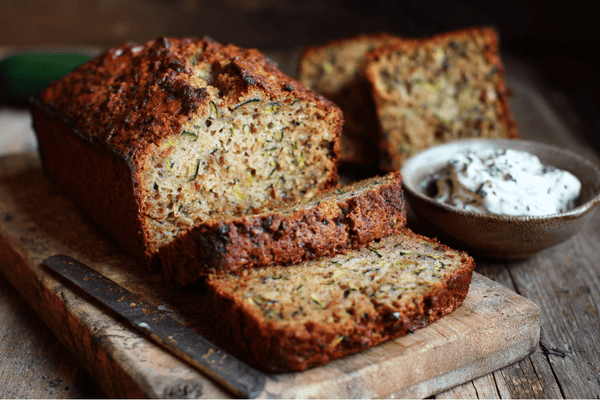
Coconuts are tropical fruits known for their hard, fibrous outer shell and versatile culinary uses. Opening a coconut may seem like a daunting task at first, but with the right technique and tools, it can be done easily and safely. In this guide, we will explore different methods to open a coconut, providing detailed instructions and helpful tips along the way.
Table of content
Types of Coconuts
Before diving into the process of opening a coconut, it's important to understand the different types you may encounter. There are mainly two types of coconuts available: young coconuts and mature coconuts.
Young Coconuts
Young coconuts have a green outer husk and contain a larger quantity of coconut water. The flesh inside is soft and jelly-like, perfect for eating or drinking.
Mature Coconuts
Mature coconuts have a brown, hairy outer husk. They contain less coconut water but have thick, firm flesh that is commonly used in cooking and baking.
Safety Precautions
Before attempting to open a coconut, it is crucial to take some safety precautions to avoid any accidents or injuries. Follow these guidelines for a safe coconut-opening experience:
- Wear protective gloves to prevent any accidental cuts while handling the tools.
- Find a stable surface and secure the coconut firmly before striking it.
- Keep your fingers away from the path of the tool to avoid any mishaps.
Method 1: Using a Knife
Opening a coconut with a knife is a common method that requires precision and caution. Follow these steps to open a coconut using a knife:
Step 1: Locate the three indentations or "eyes" on the top of the coconut. These are softer spots where you can easily puncture the shell.
Step 2: Hold the coconut firmly with one hand, and with the other hand, insert the tip of a sharp knife into one of the coconut's eyes. Apply gentle pressure and rotate the knife to create a hole.
Step 3: Once you have punctured one eye, repeat the process for the other two eyes. This will allow the coconut water to drain out.
Step 4: After draining the coconut water, place the coconut on a towel or a hard surface. Hold the knife firmly and carefully strike the middle of the coconut with the sharp edge of the knife, rotating it around the equator.
Step 5: Continue striking the coconut until it cracks open. Be patient and use controlled force to prevent the coconut from splitting unevenly.
Step 6: Once the coconut is cracked open, use a spoon or a butter knife to separate the flesh from the shell.
Method 2: Using a Hammer or Mallet
Using a hammer or mallet is another effective method for opening a coconut. Here's how you can do it:
Step 1: Locate the soft spots or "eyes" on the coconut, similar to Method 1.
Step 2: Place the coconut in a plastic bag or wrap it in a towel to prevent the shell from shattering when struck.
Step 3: Hold the coconut firmly and position it on a hard surface or the edge of a sturdy table.
Step 4: Using a hammer or a mallet, strike the coconut firmly around its equator. Rotate the coconut between strikes to create even cracks.
Step 5: Continue striking until the coconut cracks open. Exercise caution and avoid excessive force to maintain control over the process.
Step 6: Once the coconut is cracked, separate the flesh from the shell using a spoon or a butter knife.
Method 3: Using a Coconut Opener
If you frequently enjoy coconuts, investing in a specialized coconut opener can simplify the process. Follow these steps to open a coconut with a dedicated opener:
Step 1: Hold the coconut firmly with one hand and position the coconut opener over one of the coconut's eyes.
Step 2: Apply gentle pressure and rotate the opener in a circular motion until it pierces through the shell. Repeat this step for the other two eyes.
Step 3: Once the eyes are punctured, the coconut water will start to drain out. Collect the water in a container if desired.
Step 4: Continue rotating the opener until it has cut a large hole in the coconut's shell.
Step 5: Gently pry open the coconut using the opener or a spoon, separating the flesh from the shell.
Method 4: Using the Oven Method
The oven method is ideal for opening mature coconuts with thick husks. Here's how you can open a coconut using an oven:
Step 1: Preheat your oven to 375°F (190°C).
Step 2: Locate the soft spots or "eyes" on the coconut and pierce them using a screwdriver or a sharp knife.
Step 3: Place the coconut directly on the oven rack or on a baking sheet lined with foil.
Step 4: Bake the coconut for approximately 20 minutes. This process will help loosen the coconut flesh from the shell.
Step 5: Once the coconut has cooled down, carefully tap it with a hammer or a mallet to crack it open.
Step 6: Separate the flesh from the shell using a spoon or a butter knife.
FAQ
Q: Can I open a coconut without any tools?
A: While it is possible to open a coconut without tools by using natural elements like rocks, it can be quite challenging and potentially dangerous. It is recommended to use proper tools for a safer and more efficient experience.
Q: How can I tell if a coconut is fresh?
A: To determine if a coconut is fresh, check for the following signs:
- Heavy weight: Fresh coconuts tend to feel heavier due to the presence of water inside.
- Sloshing sound: Shake the coconut close to your ear. If you hear a sloshing sound, it indicates the presence of coconut water.
- Firmness: Press the coconut with your thumb. Fresh coconuts should feel firm rather than soft or mushy.
Q: How do I store opened coconuts?
A: Once a coconut is opened, you can store the leftover flesh in an airtight container in the refrigerator. It is best to consume it within a few days for the freshest taste.
Q: Can I freeze coconut flesh?
A: Yes, you can freeze coconut flesh. Simply cut it into small pieces, place them in a freezer bag, and store them in the freezer. Frozen coconut can be used in various recipes like smoothies, curries, or desserts.
Q: Are there any health benefits of consuming coconuts?
A: Coconuts offer numerous health benefits. They are a good source of essential nutrients, including vitamins, minerals, and healthy fats. Coconut water is hydrating and rich in electrolytes, while coconut flesh provides dietary fiber and can support digestive health.
Conclusion
In conclusion, opening a coconut may initially seem like a challenging task, but with the right techniques and tools, it can be done easily and safely. Throughout this comprehensive guide, we have explored various methods to open a coconut, including using a knife, hammer or mallet, coconut opener, and the oven method. Each method has its advantages and may be suitable depending on the type of coconut and personal preference.
It's important to prioritize safety when opening a coconut by wearing protective gloves, securing the coconut properly, and being cautious with the tools used. Additionally, understanding the different types of coconuts, such as young and mature coconuts, can help determine their culinary uses and flavor profiles.
Whether you're craving fresh coconut water or want to enjoy the delicious flesh in your favorite recipes, following the step-by-step instructions provided in this guide will enable you to open a coconut with confidence. Remember to be patient, use controlled force, and take necessary precautions to prevent any accidents or injuries.
Now that you're equipped with the knowledge and techniques for opening a coconut, you can confidently embark on your culinary adventures and enjoy the tropical flavors and benefits that coconuts have to offer. So go ahead, grab a coconut, and savor the delights hidden within its fibrous shell.


